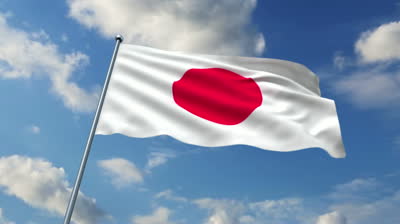Japan’s First English Teacher

Starting in the 1630s and lasting for more than two centuries, Japan’s foreign policy was one of strict isolationism — to a violent degree. The policy, called “sakoku,” was one which (per Wikipedia) held that “no foreigner could enter nor could any Japanese leave the country on penalty of death.” While there were some exceptions — Japan had trade agreements with China and Korea, as well as the Dutch East India Company — the policy effectively made it impossible for the United States and many others to engage Japan in commerce. In the late 1700s and into the mid-1800s, a handful of American ships (some sailing under the Dutch flag) attempted to make a connection with the Land of the Rising Sun, only to find Japanese cannons greeting them with a less-than-friendly response.In 1849, a U.S. naval officer named James Glynn became the first American to successfully engage in negotiations with the Japanese (with Dutch intermediaries) to secure the release of about 15 Americans prisoners who had stranded on the Japanese archipelago after a series of shipwrecks. Glynn, after returning to the United States, advised that — with a show of force — the United States could likely negotiate its way into an open trade agreement with Japan. And in the 1850s, that’s exactly what happened. A naval officer named Matthew C. Perry led a handful of warships on an expedition to Japan, threatening to lay siege if the Japanese did not opt to become American’s friend and trade partner. (Yes, “friend” — the letter Perry delivered on behalf of President Millard Fillmore read, in part, “I have no other object in sending him to Japan but to propose to your imperial majesty that the United States and Japan should live in friendship and have commercial intercourse with each other.” Here’s a pdf with the text.) Japan ultimately agreed to Perry’s terms and dispatched a samurai named Einosuke Moriyama to negotiate terms. Moriyama was chosen because, unlike virtually everyone else in Japan at the time, he spoke English. After all, a centuries-long policy of cultural isolationism doesn’t allow for a lot of immersion into foreign languages.So, how did Moriyama learn to speak English? Credit for that goes to a man named Ranald MacDonald.
MacDonald (no relation to this guy) was born in the Pacific Northwest (modern-day Oregon) in 1824. Half-Scottish, half-Native American (Chinook), he became a bank clerk early in life, but for reasons unclear, had an interest in visiting Japan — despite the fact that at the time (the 1840s), the policy of sakoku rendered that a long-shot to say the least. Nevertheless, MacDonald hatched a plan to travel to Japan safely. In 1848, he convinced a whaling ship to take him on as a sailor and allow him to depart, in a small boat, while the ship was near Japan. Then, MacDonald landed on Rishiri Island in the country’s north. But to avoid the death penalty, MacDonald claimed to have been shipwrecked — that is, he hoped that the “fact” that his visit was unattended would spark some compassion for his predicament.
It did.
Instead of executing him, the Japanese sent him to Nagasaki, the only port where they allowed the Dutch traders to transact business. And then, Japan used him for the most valuable skill he had — the ability to speak English. Perhaps showing an interest in alleviating their isolationist posture, the nation sent fourteen samurai to learn English under MacDonald’s tutelage. All fourteen had already learned Dutch from the authorized travelers, and all fourteen had begun studying English through various texts made available to them. But there was nothing quite like having a dedicated tutor whose native language was English. One of those samurai was Einosuke Moriyama, who is now thought of as having a genius-level ability to learn new languages. He learned English under MacDonald over the few months following the latter’s faux shipwreck.
MacDonald remained in Nagasaki for roughly ten months. He was one of the 15 men released to Glynn’s custody in 1849 and returned to North America, resuming his life as a sailor. Upon his return, per Wikipedia, he wrote a letter to Congress about his time in Japan, “explaining that the Japanese society was well policed, and the Japanese people well behaved and of the highest standard.” But his achievement in bringing the English language to a nation across the world went mostly unrecognized during his life. He wrote a manuscript of his travels and experiences in Japan but failed to find a publisher during his lifetime; he passed away in 1894, at age 70, without much in the way of wealth or fame. Only in 1923 were many of his travel notes published.
 Bonus Fact: As noted above, Ranald MacDonald and Ronald McDonald do not share a common history — their similar names are a coincidence. Ronald McDonald got his start when Willard Scott — the then-future weatherman of the Today show — donned some makeup and a costume as part of a McDonald’s ad campaign. (It’s unclear whether the McDonald’s Corporation or Scott first came up with the character’s name.) But Ronald McDonald didn’t always look like the bright red-haired smiley clown — he used to look like this.
Bonus Fact: As noted above, Ranald MacDonald and Ronald McDonald do not share a common history — their similar names are a coincidence. Ronald McDonald got his start when Willard Scott — the then-future weatherman of the Today show — donned some makeup and a costume as part of a McDonald’s ad campaign. (It’s unclear whether the McDonald’s Corporation or Scott first came up with the character’s name.) But Ronald McDonald didn’t always look like the bright red-haired smiley clown — he used to look like this.
From the Archives: The Harry Potter Fan Who Was Worthy of Gryffindor: A sad but touching story of another McDonald.Take the Quiz: What languages do these English words come from?
Related: Ranald MacDonald’s notes, published.
